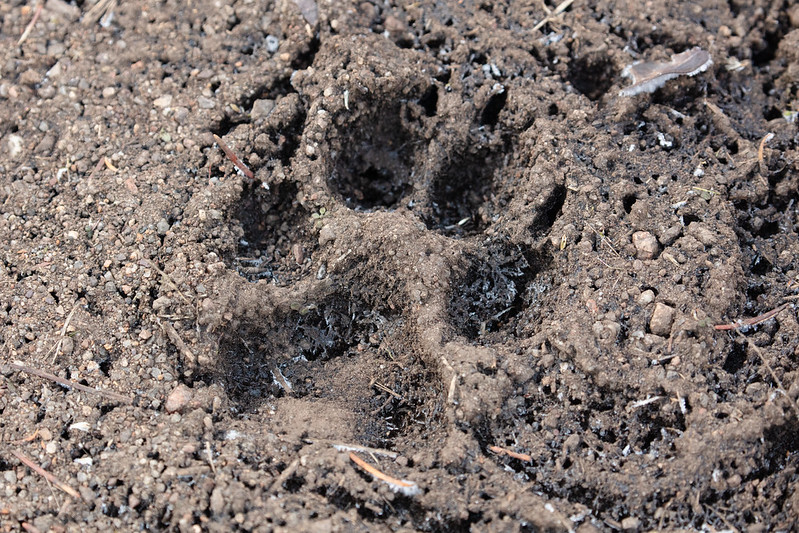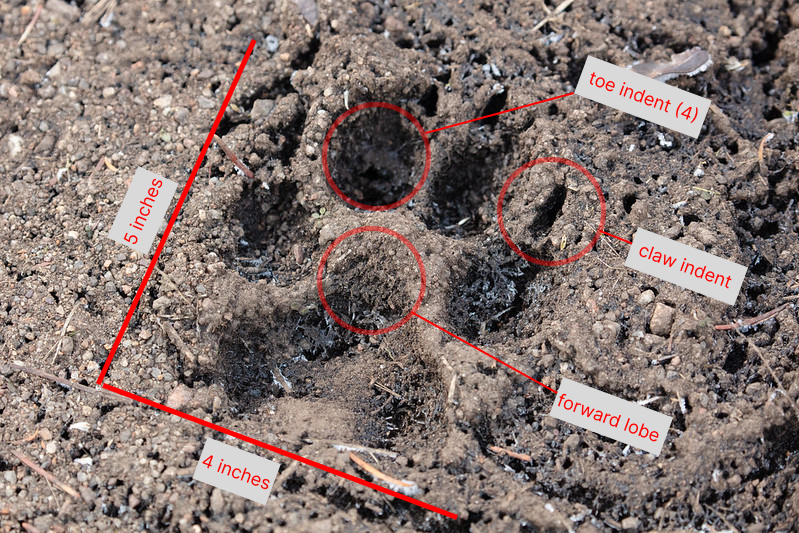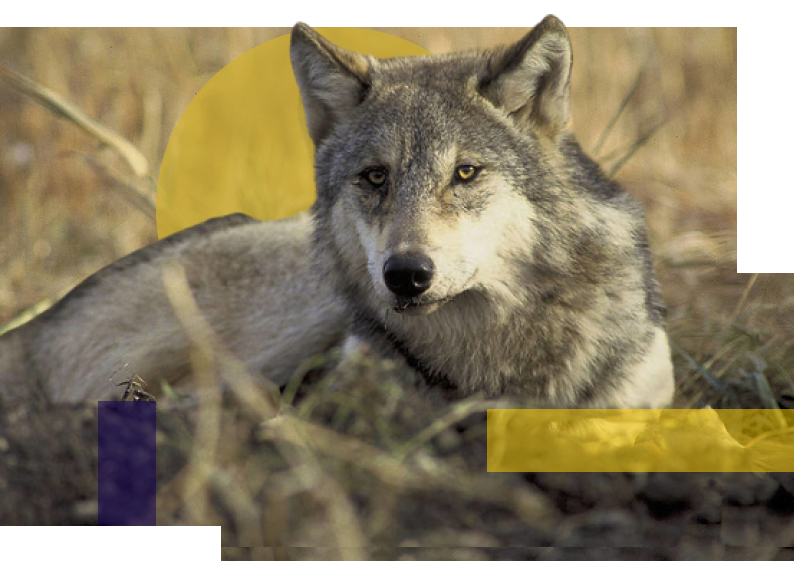There’s almost no more iconic creature to the Boundary Waters than the gray wolf.
This article will help you identify evidence of wolves on your Boundary Waters trip (and maybe see one).
Often heard and rarely seen, these massive canines are extremely secretive. They prefer to spend their time in dense forest and don’t often venture out during the day. That said, there are definitely wolves in the Boundary Waters.
Because wolves are so elusive, it’s noteworthy to see one. The only time I’ve been lucky enough to see one was while cross-country skiing at dusk. Other paddlers who report seeing wolves in the Boundary Waters most often see them from their car as they briefly cross remote roads near entry points.
What stands out to most is how truly huge they are. Gray wolves in Minnesota can be over 5 feet long (4’9″ to 5’2″) from nose to butt with the tail adding an extra 1.5 feet to their length. This makes a mature wolf about twice as long as an adult Siberian Husky, for reference. A male timberwolf stands about 3 feet tall from feet to shoulder.
Hearing wolves at night from your camp, though, is a common and haunting experience in the BWCA.
Here’s a great video of a paddler’s sighting of a few wolves on the banks of Kawishiwi River:
Tips on observing wildlife in the BWCA
As a dad to five children, I am quick to communicate that the magic of the Boundary Waters’ wildlife is that it is wild. We aren’t to interfere with any of the animals we encounter (unless of course, it’s a bear eating our food).
Photos can (and should!) be taken from a safe distance. That said, these animals often move fast and certainly hear, and smell us before we get a glimpse of them. If you are wrestling with a camera, you’re prone to miss the moment altogether. Sometimes it’s best to just soak in the moment with all your senses and recount it over stories at the campfire.
Some of the animals you can encounter in the BWCA lack good eyesight but have a great sense of smell. So if you hear a rustling in the woods, stay still and silent and simply watch. Some creature may come out into the open or even right by you. They will certainly smell your presence but if you remain still they won’t perceive you as a threat.
Looking for animals outside of the heat of the day (particularly early morning or late evening) will afford you some good opportunities to see creatures feeding or foraging.
But my biggest piece of advice (constantly repeated to my kids) is to travel quietly if you want to see something.
How many wolves live in the Boundary Waters?
At one point in our history, wolves were despised predators and also prized for their thick pelts. Throughout the U.S., wolves were poisoned and hunted to the point of becoming an endangered species in 1973, when there were only 500-700 wolves left in Minnesota. During that time, the Boundary Waters was a primary refuge for the species to exist, protected from persecution.
As of February 10, 2022, Minnesota’s gray wolf was once again deemed a threatened species and is under federal protection. However, the wolf population in Minnesota is considered stable at around 2,700 (plus or minus 700) with around 2,500 wolf pups born every spring.
When to see wolves in the BWCA
Piragis Outfitters hosts a 5-day canoe trip in August and September prominently featuring the opportunity to “howl with the wolves,” due to the fact that pups born in early spring are eager to test their howling skills right around early Autumn.
That’s not to say that wolves are only around during certain times of year. Be assured—they are year-round hunters in the Boundary Waters. I’ve had the best luck seeing a wolf in the winter because I could see through the woods much better.
What do wolf tracks look like?
Wolf tracks look just like dog and coyote tracks, but much bigger. At 5-inches long by 4-inches wide, a wolf paw print is only slightly smaller than an adult’s hand. There are four toes, claw indentations, and the pad of the foot has a single lobe pointing forward.


What does wolf poop look like?
Wolf poop (or scat) is — like its other traits — distinctly large. Most wild canines (wolves, coyotes, foxes) have similar-looking scat due to their carnivorous diet of mammals. Some shared traits are the presence of hair/fur in the scat, and a long, cylindrical shape. But the wolf’s scat is distinct in that it is larger (usually more than an inch in diameter) and has a furry taper on both ends.

Where can you see wolves in the Boundary Waters?
There have been sightings (or hearings) of wolves all over the Boundary Waters. One thing you can be sure of – wolves see paddlers in the BWCA more often than paddlers see wolves.
From Ely to Gunflint, wolf populations are not concentrated in any particular area of the Boundary Waters. They are likely to be anywhere they have a food source – deer, moose, beavers, skunk, and even fish.
Thankfully, there’s an easy way to ensure you see a wolf — visit the Ely Wolf Center!
